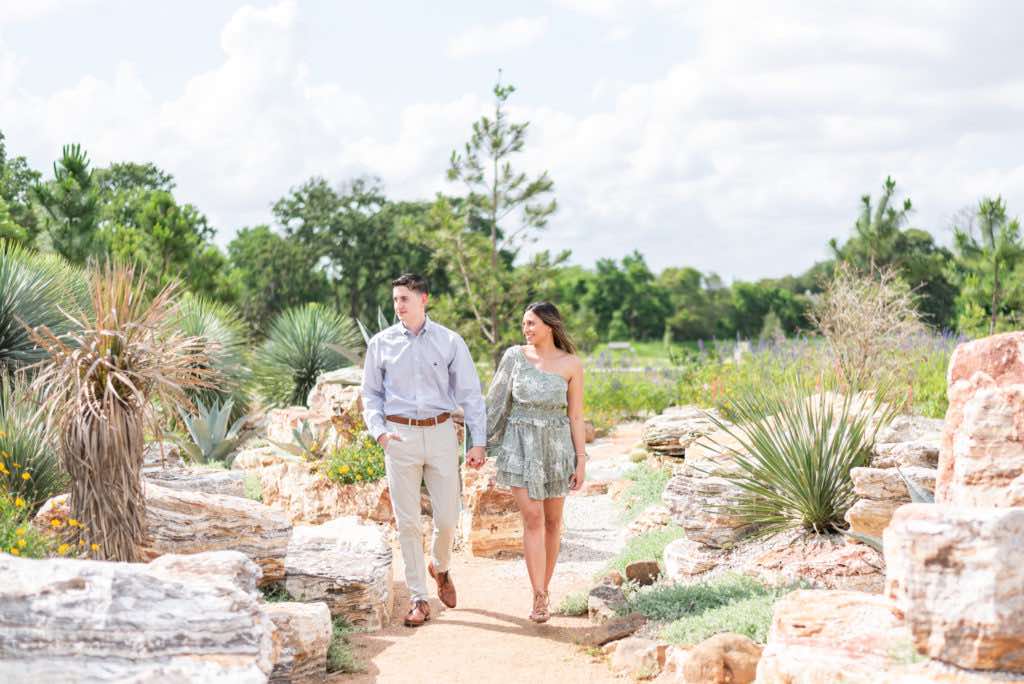There's a lot to love about the Garden.

Are you in love with nature? Passionately loving life on this green earth?
Two months after his passing, I have been reflecting on the influence of the father of biodiversity, E. O. Wilson. He promoted biophilia, the love of life and all that is alive. His theory is that we are all drawn to nature and living things. Isn’t that a beautiful impulse?
I cherish Wilson’s perspective that we are intrinsically drawn to the natural world. Just like any relationship, though, loving nature is not a passive pursuit. Love takes care and commitment, time and attention.
While we reap immediate benefits — both physically and mentally — after a visit to the Garden, when we fall deeply in love with nature, we are also spurred to take action on its behalf.
Sometimes this means spending time in our own backyards, caring for the scraggly bush that will blossom next season. Sometimes, it’s being a more conscious consumer and deciding we can do without one more “thing.” Maybe it’s choosing non-toxic cleaners or more environmentally friendly transportation options. Maybe it’s volunteering at the Garden or learning how to take care of our region’s prairies.
How are you stoking the flames of biophilia, your passionate love of life and all that is alive?
Claudia Gee Vassar, President & General Counsel

Since the first person of African heritage arrived in Texas in 1528, African Americans have had complex relationships with the land, yet much of this history is untold. “Witness: Exploring African American Connections to the Land and Place” – a four-part series incorporating talks, art, hikes, bird walks, and other experiences – is designed to bring communities together to learn more about the profound nature-based experiences of historically under-served communities in southeast Texas. As part of its larger commitment to exploring plant stories and ways in which cultures are connected to plants and nature, the Garden is pleased to host the first installment of the series – “Witness: The Long Arc” – during the celebration of Black History Month.
What’s Happening at the Garden
Witness nature’s beauty and experience the euphoria of sound and music with a soundtrack specially curated to enhance your time at the Garden. Simply open your phone’s camera app, capture QR codes displayed on placards, then open the link and listen to unique musical pieces recorded by ROCO!
This exciting new offering will open to the public on Monday, February 14 and is included with the cost of entry to the Garden (free to members). Explore sponsorship opportunities.
Horticulture Help
Do Houston plants receive freeze damage because they’re simply not cold hardy enough?
Your plants may be perfectly fit to withstand low temperatures. The issue has to do with our region’s rollercoaster weather. When an extreme temperature see-saw happens, plants don’t have enough time to adapt (whereas in more northerly climates, it cools off gradually and stays cold all winter, giving plants additional time to adapt to the winter).
How soon should you remove damaged growth after a freeze?
There’s no need to rush! That mushy, damaged growth provides protection for your plant. Eventually, it should be removed, but removing it too soon could harm the plant further by exposing undamaged growth when another freeze occurs.
Making Memories at the Garden
Explore our Events Calendar for more upcoming opportunities to grow your gardening knowledge.
There are so many ways you can help the Houston Botanic Garden grow. Annual fund donations, fundraising events, sponsorships, foundation grants, and corporate support provide a significant amount of the Garden’s funding. Click below to check out how you can help support the Garden monetarily.
You can make a donation to our annual fund at any time by clicking here or texting give2garden to 71777.





